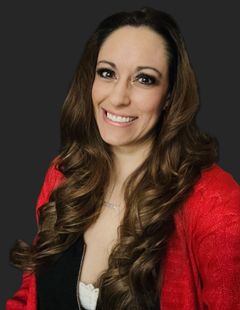I don’t know one health and fitness professional who doesn't have his or her sights set on writing a personal success story. When attempting to build a career and name for ourselves, we are naturally drawn to the goal of success. And there are as many definitions of "success" as there are health and fitness professionals. While success might mean plump profit margins or a certain number of social media followers to some, other might view success as a combination of rewarding feelings at the end of the day and earning a comfortable income.
How you perceive success in your business is up to you, but to achieve any definition of success, you need the right formula and a well-defined set of strategies to help you get there.
First steps first. Here are three things any health and fitness professional must do to lay a foundation for success:
- Define what success means to you. Ask yourself, "How will I know I’m successful?"
- Pursue your intentions with passion and purpose. Decide what it is about being in this industry that excites you the most. What are your individual strengths? What can you offer consumers that someone else hasn’t yet thought of?
- Act with consistency, which builds credibility. Once you define success and move forward with passion and purpose, be consistent in your practices, both personally and professionally.
Start with those three steps and then create strategies that you can and will employ to help you build a career. Here are 10 career-building strategies you can try:
1. Regularly set goals.
The phrase “strategic plan” terrifies most people because it sounds so formal and rigid. Instead, take the time to create and reflect upon your goals so you can identify your next steps. Set a time in your calendar—yearly, quarterly, etc.—to set incremental goals that will lead toward your larger objectives.
2. Strengthen areas of weakness.
Personal skills are easy to examine; it’s the weaknesses that are often barriers to moving forward. Closely examine what you already do well and what you need to build upon. If you know you aren’t a great public speaker, practice. If you have a difficult time handling conflict, address this with your continuing-education goals. If it doesn’t challenge you, it won’t change you or your business.
3. Create a unique brand.
In today’s digital world, nothing is more valuable than how you brand yourself and the services you offer. Work closely with a designer to create a brand that not only effectively communicates your message, but also speaks to your intended clientele. Don’t skimp on the investment this requires.
4. Leverage social media.
Social media is alive, active and always abuzz. Take advantage of social media networks to advertise, promote and share your message. Try hosting a Facebook live show or starting an Instagram campaign. Use social media to build your social capital and reputation.
5. Develop a product.
Products don’t need to be limited to equipment invention. Think outside the gym. What product can you develop and sell? Perhaps it’s an app or a set of interactive PDFs for your clients. You may even consider developing your own “toolkit” for business or client success.
6. Write an e-book or blog.
Writing is a valuable skill and a lost art. While we work (mostly) in a face-to-face setting with clients and colleagues, think about ways you can expand your reach through written work. E-books are popular (and could be a product you develop) and easily downloadable for a small fee. Writing is also a way to get your name out there. Start small with your own blog and pursue larger opportunities as you build a writing base.
7. Acquire a new skill.
This is different than strengthening an existing ability that is “raw.” This strategy involves pursuing something you have never tried or know nothing about, but that can add value to your business. Photography, for example, is a skill you could learn to help you develop amazing and captivating social media images.
8. Build a class.
Online learning is more than the “wave of the future”—it has the potential to permanently alter the landscape of education. Consider building your own class and offering it in an online setting. A class doesn't have to be complicated—it just has to be thoughtfully designed and meaningful to your intended audience. One approach is to build classes based on the most commonly asked questions you receive from clients. For example, you could create short classes with two to three modules aimed at helping individuals learn how to read a food label or how to evaluate information on the Internet. Get your creative juices flowing!
9. Network in new ways.
Networking is crucial. Find new ways to connect with colleagues. Try not to limit yourself to networking just within your community. Are there specific health and fitness professionals that you admire or follow? Reach out to them. Some will respond. Others may not. But it’s worth making the connection and fostering a relationship.
10. Actively seek feedback.
No one grows without the help of constructive insight. Part of owning and building a business is caring about how your consumers and partners feel about how things are going (or not going). It's important, albeit intimidating, to ask “How am I doing?” This is part of living in a growth mindset. Be sure to actively and regularly seek insight and feedback from people who can honestly and thoughtfully give you a fair and balanced perspective on how you are doing.
The journey to success will look different for each individual. There’s no one perfect way to travel. The fun part is deciding what your path will look like. There’s no question that you will encounter potholes along the way, but travel that path with passion, purpose and consistency, and you will undoubtedly achieve your own definition of success.
ACE’s Personal Trainer Certification is backed by 30 years of science-based research. Learn more.




 by
by 










 by
by